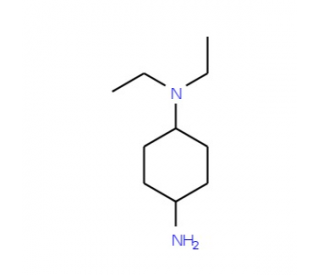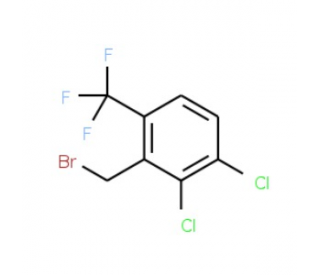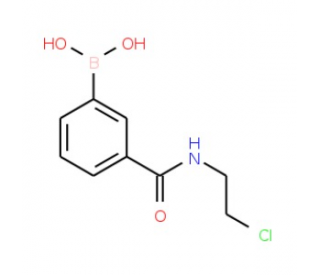詳細(xì)說明
Purity
>80%, by SDS-PAGE under reducing conditions and visualized by Colloidal Coomassie? Blue stain at 5 μg per lane
Activity
Measured by its ability to cleave a fluorogenic peptide substrate Mca-PLAQAV-Dpa-RSSSR-NH 2 (Catalog # ). The specific activity is >150 pmol/min/μg, as measured under the described condition. See Activity Assay Protocol on www.RnDSystems.com
Source
Mouse myeloma cell line, NS0-derived Ala39-Ser531 (Arg125Pro) & (Ala182Thr), with a C-terminal 6-His tag
Accession #
N-terminal Sequence
AnalysisAla39
Predicted Molecular Mass
47 kDa
SDS-PAGE
56-65 kDa, reducing conditions
7796-MP |
| |
Formulation Supplied as a 0.2 μm filtered solution in MES, NaCl, CaCl 2 and Glycerol. | ||
Shipping The product is shipped with polar packs. Upon receipt, store it immediately at the temperature recommended below. | ||
Stability & Storage: Use a manual defrost freezer and avoid repeated freeze-thaw cycles.
|
Assay Procedure
Materials
Activation Buffer: 50 mM Tris, 10 mM CaCl2, 150 mM NaCl, 0.05% (w/v) Brij-35, pH 7.5 (TCNB) + 100 μM ZnCl2
Assay Buffer: 50 mM Tris, 10 mM CaCl2, pH 7.5
Recombinant Human MMP-17 (rhMMP-17) (Catalog # 7796-MP)
p-aminophenylmercuric acetate (APMA) (Sigma, Catalog # A-9563), 100 mM stock in DMSO
Substrate: MCA-PLAQAV-Dpa-RSSSR-NH2 (Catalog # ), 2 mM stock in DMSO
F16 Black Maxisorp Plate (Nunc, Catalog # 475515)
Fluorescent Plate Reader (Model: Gemini EM by Molecular Devices) or equivalent
Activate rhMMP-17 at 100 μg/mL with 1 mM APMA in Activation Buffer.
Incubate at room temperature for 2 hours.
Dilute activated rhMMP-17 to 2 ng/μL in Assay Buffer.
Dilute Substrate to 20 μM in Assay Buffer.
Load 50 μL of the 2 ng/μL rhMMP-17 into plate, and start the reaction by adding 50 μL of 20 μM Substrate. Include a Substrate Blank containing 50 μL Assay Buffer and 50 μL of 20 μM Substrate without any rhMMP?17.
Read at excitation and emission wavelengths of 320 nm and 405 nm (top read), respectively, in kinetic mode for 5 minutes.
Calculate specific activity:
Specific Activity (pmol/min/μg) = | Adjusted Vmax* (RFU/min) x Conversion Factor** (pmol/RFU) |
| amount of enzyme (μg) |
*Adjusted for Substrate Blank
**Derived using calibration standard MCA-Pro-Leu-OH (Bachem, Catalog # M-1975).
Per Well:
rhMMP-17: 0.1 μg
Substrate: 10 μM
Background: MMP-17
Matrix metalloproteinase 17 (MMP?17) is a zinc metalloproteinase that is an integral membrane protein (1). It belongs to the membrane?type MMP (MT?MMP) subfamily, and is also known as MT4?MMP. It is associated with the cell membrane by a glycosylphosphatidylinositol (GPI) anchor (1). It has the potential to function as a pro?tumor necrosis factor?a (TNF?a) convertase (2). Unlike MMP?14 (MT1?MMP), it is a poor activator of pro?MMP?2. MMP?17 is relatively poor at digesting components of the extracellular matrix, but does cleave fibrinogen and fibrin (2). MMP?17 is known to activate the aggrecanase ADAMTS?4 through proteolysis (3). MMP?17 is expressed in many tissues with the highest levels seen in the brain, colon, ovary, testis, and kidney papilla (4). It has been detected in several human cancers, including gliomas, prostate carcinomas, and breast carcinomas (5). Recombinant Human MMP?17 was expressed without its GPI anchoring sequence, resulting in its secretion as a soluble protein.
References:
Itoh, Y. et al. (1999) J. Biol. Chem. 274:34260.
English, W. R. et al. (2000) J. Biol. Chem. 275:14046.
Gao, G. et al. (2004) J. Biol. Chem. 279:10042.
Srichai, M. B. et al. (2011) PLoS ONE 6:e17099.
Sohail, A. et al. (2008) Cancer Metastasis Rev. 27:289.
Long Name:
Matrix Metalloproteinase 17
Entrez Gene IDs:
4326 (Human); 23948 (Mouse); 288626 (Rat)
Alternate Names:
matrix metallopeptidase 17 (membrane-inserted); matrix metalloproteinase 17 (membrane-inserted); matrix metalloproteinase-17; membrane-type matrix metalloproteinase 4; membrane-type-4 matrix metalloproteinase; MMP17; MMP-17; MT4MMP; MT4-MMP; MT-MMP 4; MTMMP4










 粵公網(wǎng)安備44196802000105號
粵公網(wǎng)安備44196802000105號